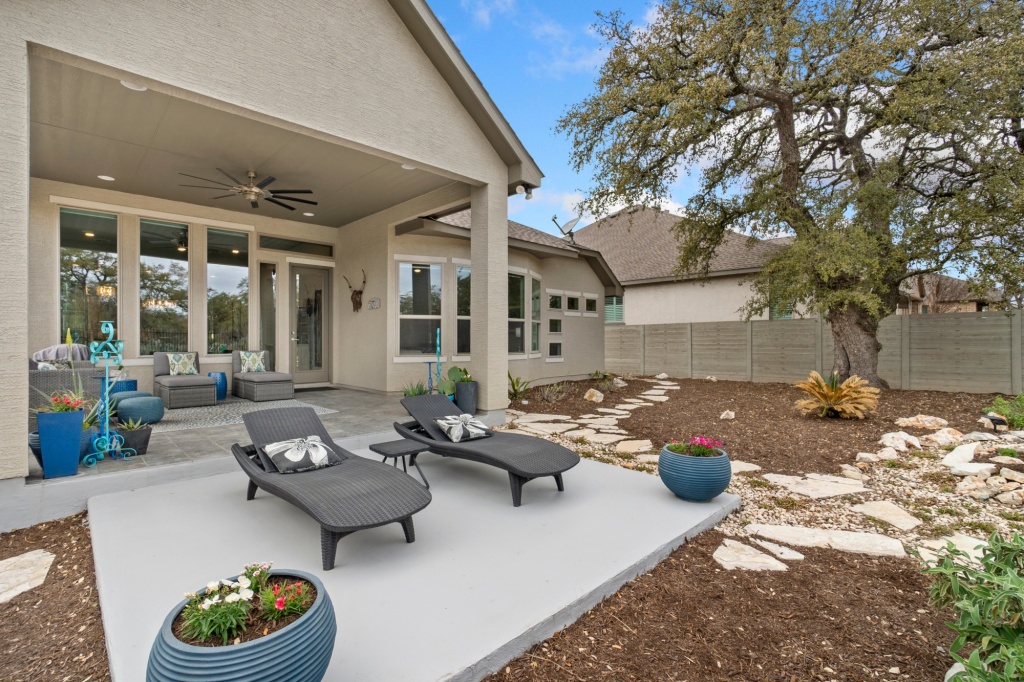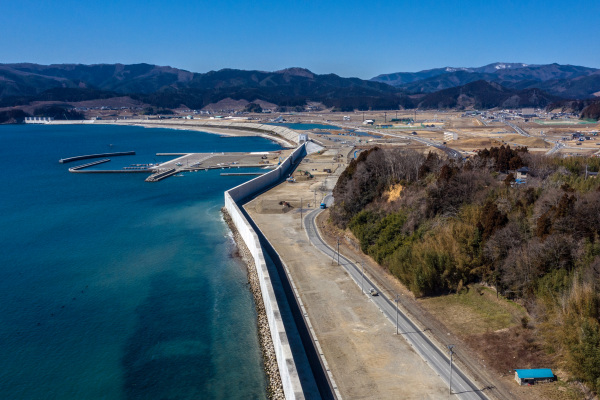It may feel unfamiliar this year, but spring has sprung in all its green glory. It’s as true to its rainy roots as it’s ever been, from lush, green, wildflower-dotted rolling hills to displays of photosynthesis on lawns that remained fashionably gold during drought years.

This year’s spring in the Bay Area brings different opportunities to take advantage of our Mediterranean-style climate. New homeowners have a blank slate for creating gardens and outdoor spaces that can get off to a good start this year but withstand dry weather for years to come.
Plan shade structures
Early in building preparation, take time to understand what outdoor structures might be included by the builder per plan. Some features or structures may come standard; others may be offered as builder design options to buyers who want to add them.
These might include roof overhangs that create a covered or shaded patio or lanai behind the house. Some builders also include or offer options for covered porches or second-story balconies.
Because the house will be built before any greenery is planted or walkways or patios are finished, spend some time during construction to determine what shade structures can enhance outdoor spaces.
An extended roofline might create a lanai outside. Even more easily, a pergola installed from an exterior wall can have the same effect, at a lower cost. Consider shade sails atop the pergola.
The builder’s solar provider might even have ideas on how to angle solar panels above a pergola or on an extended roofline to not only collect energy from the sun but create shade.
Consider small gazebos, sturdy umbrellas and or even taller pergola structures above a seating area with a fire pit. By day, billowing linen at good height can protect the seating area from sunlight; by night, the fire pit can warm the space without need to remove the fabric shade.
Know what’s included
As early as possible, learn what plant life, irrigation and concrete or stone work the builder’s plans include. For instance, homes with front lawns often include sod or select drought-resistant plants surrounded by bark or gravel. Single-family detached homes and townhomes also tend to include standard concrete walkways, front steps and some patio space.
Ask when the outdoor work will take place relative to the construction timeline. Also ask about the best ways to customize any outdoor spaces, including lawns, before they’re finished.
Mark your calendar for a few months before the builder’s estimated time for starting landscape work.
While a buyer will not be permitted to conduct their own garden or hardscape work during construction, factoring in a few months’ lead time can help when coordinating customizations with the builder’s landscape design teams.
Add some good soil
The better the soil, the better the nutrients and groundwater drainage. The better the nutrients and drainage, the healthier the plant life will be.
Even if you’re not yet ready to decide on a lawn or a mixture of native plants and hardscape, consider laying a deep layer of nutrient-rich soil before construction finishes. Doing so will provide a healthy foundation for any future landscape design.
Bear in mind that adding new soil — or even combining and blending some new soil with the clay-type soil common to residential communities — can lead to better quality soil over time. If the home plan includes irrigation, take advantage of its installation time to plan for mixing good soil around and between all pipelines.
Simple hardscape can add depth
It’s possible, and even straightforward, to add depth to an outdoor space without adding more water. One way to do so is to plan a hardscape design that has consistency but includes enough accents in color and size that the eye travels with interest from one spot to another.
The patio, for instance, might feature several square feet of stamped concrete in a simple pattern with slate, dark brick or other stone pathways surrounding it or cutting through it. Raised planting beds with accents pulled from the pathway stone, tile or concrete can connect the look and feel.
As soon as the permanent elements are in place — the soil, the lawn, the walkways, patios and raised beds or fixed seating options — it’ll be time to add color by way of plants, flowers, vegetable gardens, pottery, small modular water features, no- or low-water landscape pieces and other colorful outdoor designs.
Watch this space next week for specific ideas on plant life, lighting and seasonal decor.










